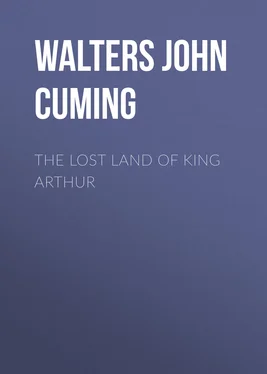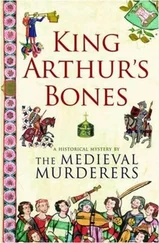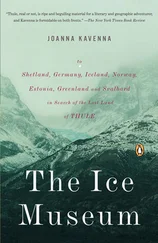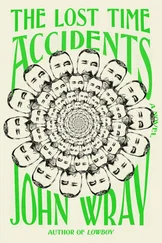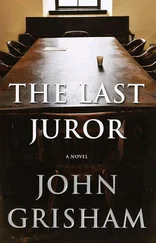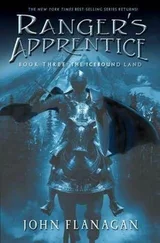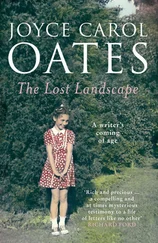John Walters - The Lost Land of King Arthur
Здесь есть возможность читать онлайн «John Walters - The Lost Land of King Arthur» — ознакомительный отрывок электронной книги совершенно бесплатно, а после прочтения отрывка купить полную версию. В некоторых случаях можно слушать аудио, скачать через торрент в формате fb2 и присутствует краткое содержание. Жанр: Путешествия и география, История, foreign_edu, foreign_antique, foreign_prose, на английском языке. Описание произведения, (предисловие) а так же отзывы посетителей доступны на портале библиотеки ЛибКат.
- Название:The Lost Land of King Arthur
- Автор:
- Жанр:
- Год:неизвестен
- ISBN:нет данных
- Рейтинг книги:3 / 5. Голосов: 1
-
Избранное:Добавить в избранное
- Отзывы:
-
Ваша оценка:
- 60
- 1
- 2
- 3
- 4
- 5
The Lost Land of King Arthur: краткое содержание, описание и аннотация
Предлагаем к чтению аннотацию, описание, краткое содержание или предисловие (зависит от того, что написал сам автор книги «The Lost Land of King Arthur»). Если вы не нашли необходимую информацию о книге — напишите в комментариях, мы постараемся отыскать её.
The Lost Land of King Arthur — читать онлайн ознакомительный отрывок
Ниже представлен текст книги, разбитый по страницам. Система сохранения места последней прочитанной страницы, позволяет с удобством читать онлайн бесплатно книгу «The Lost Land of King Arthur», без необходимости каждый раз заново искать на чём Вы остановились. Поставьте закладку, и сможете в любой момент перейти на страницу, на которой закончили чтение.
Интервал:
Закладка:
According to no mean authority, we must leave England entirely and search in the North alone for the sites, not only of King Arthur’s battles, but for all the places connected with his exploits and his residence. Badon is then found in Linlithgowshire at Bowden Hill, and the great battle of Arderydd is located at Arthuret in Liddlesdale. The Scotch Merlin and the Scotch Lancelot are the king’s companions, and a Scotch Gildas is the historian. The resting place of Avalon is then found in the caverns of the Eildon Hills, and the voice to rouse him from his charmed sleep will echo through them and “peal proud Arthur’s march from fairyland.” As a curious fact it may be mentioned that nearly all the heroes of the “Four Ancient Books of Wales” are traced to Scotland, and admittedly in the Arthurian legend the British king was connected with as northern a place as the Orkneys by the marriage of his sister to the king of those islands. Of King Arthur, the Scotch ballad rudely tells that when he ruled that land he “ruled it like a swine.” The story of the king was the diversion of James V., who may have known that Drummelziar on the Tweed could boast of a Holy Thorn like Glastonbury, that there was an Arthur’s Oven on the Carron near Falkirk, and that Guinevere’s sepulchre was at Meigle in Strathmore. Edinburgh, or Agnet, is positively represented as the site where the Castle of Maidens stood, and the lion-shaped Arthur’s Hill is supposed to confirm the tradition that here the king abode and made his name. 11 11 “Arthur’s seat” may be but an adaptation of the Gaelic Ard-na-said, or “the height of the arrows.”
His tomb is pointed out in Perthshire, and all the machinery of the romances is claimed as of Scotch origin and invention. The names of localities are traced, and by transporting Arthur boldly to the Lowlands we account more easily for his rapid incursions into Northumberland and of the country north of the Trent, if we cannot for his equally rapid journeys to Dover and Almesbury and Winchester.
Are not the interchangeability of names and the duplication of persons and places susceptible of a very simple explanation? Caerleon, or Carduel, was confused with Carlisle, each in itself a fitting and likely place for Arthurian exploits; the historians were grievously misled as to Winchester and the part it occupied in the romances; and we know now that various contradictions simply arose from the confusion in the minds of the chroniclers, who never seemed to have been quite certain whether Caledonia and Calydon were not one and the same, whether Camelot was inland or by the sea, whether Joyous Gard was a few days’ or a few months’ journey from Cornwall, whether Camelot was in England or in Wales, whether Arthur’s “owne castell” at Tintagel could be reached by “riding all night” from London, or whether Lyonnesse was Cornwall or Brittany. A hundred topographical complexities meet us wherever we look, and the sole conclusion of the matter is that Geoffrey and his successors inextricably mixed Scotch, Welsh, and Armoric details both in regard to the stories and the localities. The historians made no effort to be consistent in their allusions, to reconcile contradictory statements, or to account for abrupt changes of scene from the South-West to the North. While they endeavoured to concentrate Arthur’s kingdom in South Wales and Cornwall they made occasional sweeps to Berwick and Edinburgh, and annihilated the distance between Dover and Carlisle. To add to the confusion there were names, especially in the Lowlands of Scotland and in the West of England, of the same derivation, and, as Mr. Glennie has demonstrated, it is as easy to discover a Caledonian Caerleon, Avalon, or Camelot as it is to discover any of them in the district once called Cameliard. The unravelling of the skein, which became more and more entangled as new hands developed the romances, is now almost an impossibility. Arthur’s own name was changed, and it has been affirmed that he is still confused with Arthurius of Gwent, and with others of like name who were distinct persons. The conclusion of the whole matter must be that names in the romances are a source of error and confusion; that different significances were attached to them by the chroniclers themselves, and that if the truth be ever established totally new meanings may be expected.
Let me here give one instance of possible confusion of names, and broach a somewhat bold theory. The name Camelford, the scene of the last battle, is by some said to be derived from the Anglo-Saxon gafol , meaning “tribute,” the spot so called marking the ford where of old time tribute was paid. The name Guildford is also declared to have a similar signification, and, in fact, to be but a variation of Camelford. If this be so, a curious point arises. Guildford is mentioned towards the close of the Arthurian history. Sir Lancelot and the king having parted company, it is recorded that Arthur “departed towards Winchester with his fellowship. And so by the way the king lodged in a towne called Astolat, which is now in English called Gilford.” Upon this Mr. Aldis Wright observes: “Guildford in Surrey is no doubt the place alluded to; but I am not aware that the name of Astolat or Astolot (Caxton) is given to it in any authentic history.” It may be argued that King Arthur would be more likely to pass through Guildford, Surrey, than through Camelford, Cornwall. But his starting point is not certain, and it must be specially noted that the Winchester to which he was making his way was not Winchester in Hampshire but “Camelot, that is, Winchester” (Book XVIII., c. 9). The unauthorised and even absurd interpolation that Camelot was Winchester at once changes the whole argument. Disregarding this misleading explanation we find that Arthur was on his way to Camelot from one of his Courts, and if Camelot was in Somersetshire it is most likely that Camelford would be one of the intermediate stages. But the importance of the whole contention is this: Astolat, as frequently mentioned in connection with the “faire maide” Elaine and Sir Lancelot’s worthiest love episode, is undiscoverable. The name is unknown outside romance; and though we are assured that it is “now in English called Gilford,” no authority can be found for the assertion. Besides, Guildford in Surrey was rather beyond the borders of the British Kingdom, even granting occasional excursions to Middlesex and Kent. But if Guildford were synonymous with Camelford, as the derivation permits us to believe, then Astolat was none other than Camelford, and at once there are light and order where formerly prevailed obscurity and confusion. Another point worth mention is that, although tradition marks Camelford as the actual scene of important events in the Arthurian history, and although from its situation, its proximity to Tintagel, and its steep hill suitable to be crowned by a baron’s castle such as Sir Bernard of Astolat possessed, we may safely surmise that it was well known to the ever-journeying knights, yet the actual name of Camelford is never mentioned in the chronicles. As it was of Anglo-Saxon origin, this omission would easily be accounted for in the earliest records, while if Astolat was the traditional name it is at once clear how it could equally be applied to Camelford and to Guildford. We must of course remember that where the chroniclers themselves sought to elucidate they too often confused; the finger-posts they set up have started many upon weary and fruitless journeys, and the guidance offered with such confidence turns out most commonly to be the most random of guesses. If, however, we may place the slightest credence in the “Astolat, which is now in English called Gilford,” as much can be said for “Gilford” being “Gafolford” or Camelford, as for its being “Gyldeford” or Guildford. The stretch of low-lying level fields on either side of the Camel, the sharp-peaked hills in the distance, the dark meres among the hills, and the angry sea lashing against the rocks visible a mile or two away, all accord with the typical scenery of King Arthur’s realm, and make us not unwilling to believe that famous Astolat was here to be found.
Читать дальшеИнтервал:
Закладка:
Похожие книги на «The Lost Land of King Arthur»
Представляем Вашему вниманию похожие книги на «The Lost Land of King Arthur» списком для выбора. Мы отобрали схожую по названию и смыслу литературу в надежде предоставить читателям больше вариантов отыскать новые, интересные, ещё непрочитанные произведения.
Обсуждение, отзывы о книге «The Lost Land of King Arthur» и просто собственные мнения читателей. Оставьте ваши комментарии, напишите, что Вы думаете о произведении, его смысле или главных героях. Укажите что конкретно понравилось, а что нет, и почему Вы так считаете.
